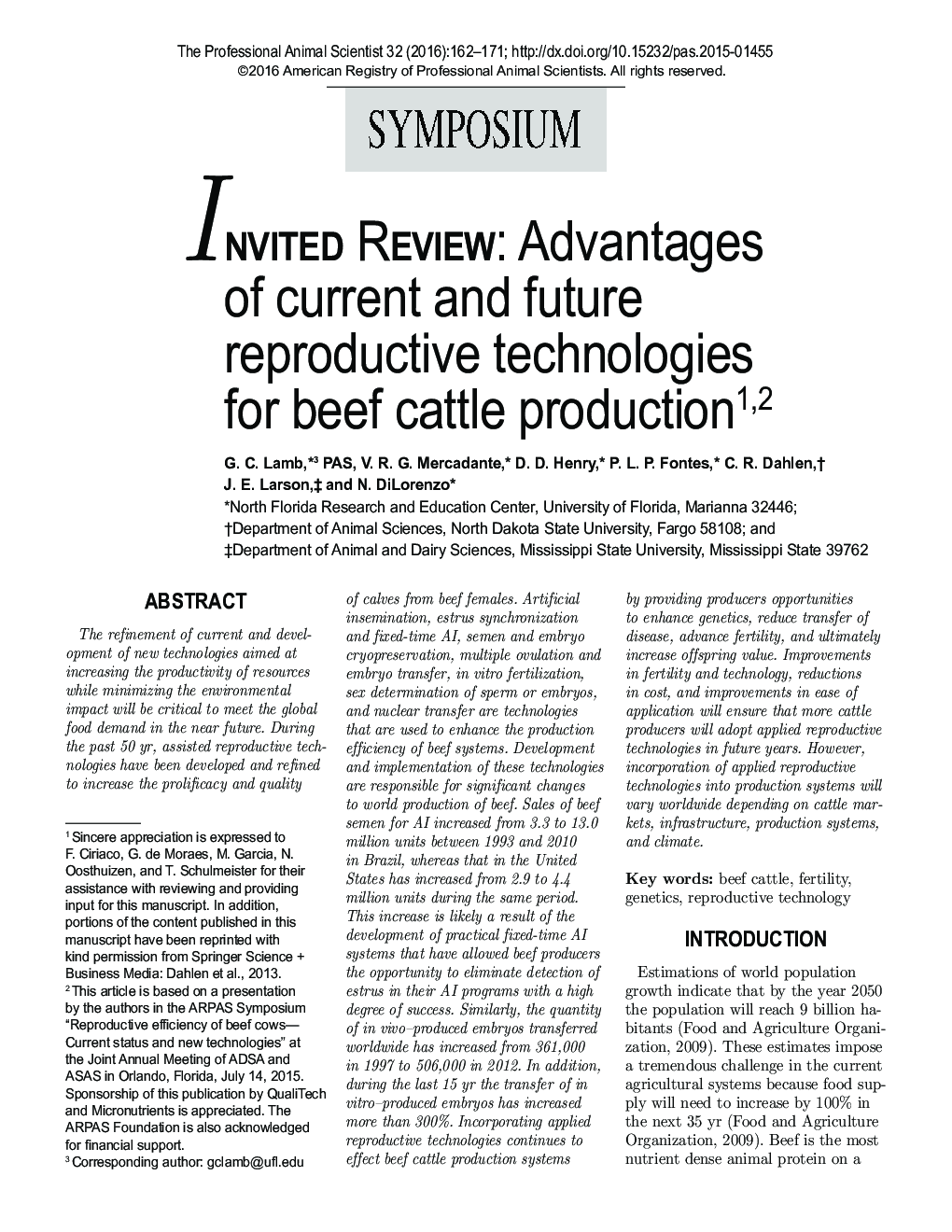| Article ID | Journal | Published Year | Pages | File Type |
|---|---|---|---|---|
| 10161720 | The Professional Animal Scientist | 2016 | 10 Pages |
Abstract
The refinement of current and development of new technologies aimed at increasing the productivity of resources while minimizing the environmental impact will be critical to meet the global food demand in the near future. During the past 50 yr, assisted reproductive technologies have been developed and refined to increase the prolificacy and quality of calves from beef females. Artificial insemination, estrus synchronization and fixed-time AI, semen and embryo cryopreservation, multiple ovulation and embryo transfer, in vitro fertilization, sex determination of sperm or embryos, and nuclear transfer are technologies that are used to enhance the production efficiency of beef systems. Development and implementation of these technologies are responsible for significant changes to world production of beef. Sales of beef semen for AI increased from 3.3 to 13.0 million units between 1993 and 2010 in Brazil, whereas that in the United States has increased from 2.9 to 4.4 million units during the same period. This increase is likely a result of the development of practical fixed-time AI systems that have allowed beef producers the opportunity to eliminate detection of estrus in their AI programs with a high degree of success. Similarly, the quantity of in vivo-produced embryos transferred worldwide has increased from 361,000 in 1997 to 506,000 in 2012. In addition, during the last 15Â yr the transfer of in vitro-produced embryos has increased more than 300%. Incorporating applied reproductive technologies continues to effect beef cattle production systems by providing producers opportunities to enhance genetics, reduce transfer of disease, advance fertility, and ultimately increase offspring value. Improvements in fertility and technology, reductions in cost, and improvements in ease of application will ensure that more cattle producers will adopt applied reproductive technologies in future years. However, incorporation of applied reproductive technologies into production systems will vary worldwide depending on cattle markets, infrastructure, production systems, and climate.
Related Topics
Life Sciences
Agricultural and Biological Sciences
Animal Science and Zoology
Authors
G.C. PAS, V.R.G. Mercadante, D.D. Henry, P.L.P. Fontes, C.R. Dahlen, J.E. Larson, N. DiLorenzo,
